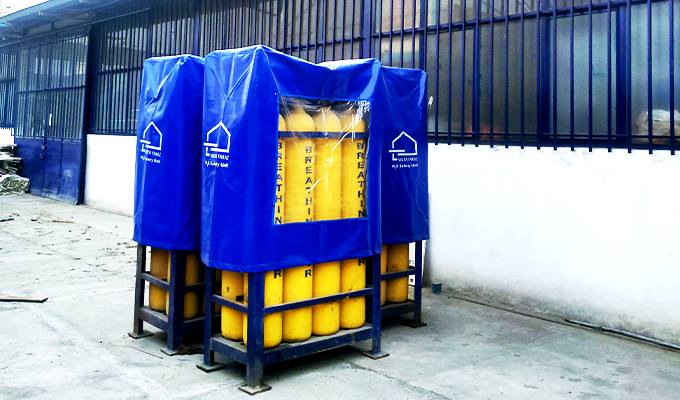Location: Solabder oil field development plan (Gachsaran)
Client: Qeshm Oil and Energy Industries Development Company OEID
Equipment supply contractor: Vistafaraz company





This project aims to provide safety services regarding hydrogen sulfide, which is a seriously hazardous gas in many industrial workplaces.
H2S may accumulate wherever a mixture of hydrocarbons and sulfur is found. It is also produced when organic matter decays. It may be found in places such as docks, mine tunnels, material processing mills, sewer wells, and marshes.
Employers should ensure that employees are aware of the deadly effects and lethal properties of H2S and are taught how to give first aid to save victims.
In order to develop business and invest in new fields regarding the basic needs of large infrastructural projects, Vista Faraz Co. has acquired H2S safety equipment and entered into contract with OEID.
The training of the client’s and the contractors’ personnel is one of the most important parts of this project. This training will be conducted using the latest training methods and VR tools. Vista Faraz Co.’s goal is to ensure that the operations will be carried out safely and effectively and all the personnel/equipment HSE principles are applied.
First Aid Procedure
If someone stops breathing due to H2S inhalation, they must be immediately taken to a safe place and receive artificial respiration (mouth-to-mouth resuscitation).
- Assess the casualty’s level of reaction.
- Shake them and call their names loudly.
- Asses their breathing (by watching, listening and feeling)
- Place your ear next to their nose and mouth. Check the movement of their chest; listen to their breathing; and feel their breath on your cheek.
- Open the respiratory tract.
- Tilt their head back and check the inside of their mouth and throat to make sure the respiratory tract is not blocked by anything.
- Reassess their breathing.
This is done in order to see if the respiratory tract is well open (by watching, listening and feeling the breath)
- Bring air into the lungs.
- If the casualty is not breathing, keep the respiratory tract open; close their nose; blow deeply into their lungs slowly for 1~1.5 seconds.
- Let the air be expelled and give them a second breath.
- Check their pulse.
- If their pulse is detected, continue artificial ventilation at a rate of 12-15 breaths per minute.
- If no pulse is detected, start CPR.
Note: Only qualified people are allowed to perform CPR.

